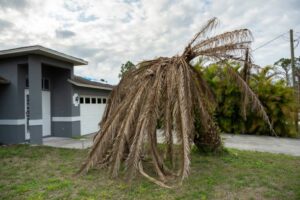Palm trees can add a tropical touch to any garden. However, they do need to be properly maintained and taken care of. Otherwise, they could become a nuisance and cause a lot of damage to the surrounding area.
Common issues with an unhealthy palm tree are splintering, damage to the foundation and dead branches. Here are some tips to help you decide when it is time for palm tree removal in Adelaide. For more palm tree removal guidelines Adelaide, click here.
Splintering
 Palm trees add value to residential and commercial properties but need regular maintenance. They may pose safety issues if they are overgrown, and they can damage the foundation of homes if roots penetrate plumbing systems. In addition, green palms can block natural light, cause trip hazards, and compete with other plants for soil nutrients.
Palm trees add value to residential and commercial properties but need regular maintenance. They may pose safety issues if they are overgrown, and they can damage the foundation of homes if roots penetrate plumbing systems. In addition, green palms can block natural light, cause trip hazards, and compete with other plants for soil nutrients.
Before removing a palm tree, it is essential to ensure the area is clear. Branches, seeds, and fruit can fall and cause injuries. It is also necessary to remove the fronds and trunk of the palm before felling it.
If you are removing a significant or regulated tree, getting permission from the council before beginning work is essential. This process will involve applying the form and providing details of the proposed results. A panel will assess the application, and recommendations will be made. This ensures that the tree is not removed inappropriately or without approval. For more palm tree removal guidelines Adelaide, click here.
Damage to the Foundation
Palm trees can be beautiful additions to a garden but require regular maintenance and care. Overgrown palms can block natural light, create trip hazards, and even outcompete other plants for soil nutrients. They can also cause foundation damage to buildings by causing dehydration of the soil around the building.
A major mistake many people make when removing a palm tree is leaving behind the stump. A rotting stump can cause several problems, including blocking drains and causing cracks in pavement or walls. In addition, it can be an eyesore that makes your property less appealing.
If you have an overgrown palm tree on your property, consider having it removed by a professional tree service company. These professionals can remove the entire tree and handle any remaining stumps to prevent future growth. They can also inspect the roots for overgrowth to ensure that they are not affecting the foundations of your home.
Dead Branches
Palm trees are a beautiful addition to many properties. However, they must be kept in good condition and pruned regularly to prevent damage or rot. Dead branches can take away from the overall look of a tree and cause safety hazards for anyone using or walking underneath.
A dead branch is usually bare and has a dry, brittle appearance. It will also have brown or greyish leaves. If you notice that a lot of the fronds on your palm are dying, you should call a professional to have them removed.
Palms can be challenging to grow and maintain because they produce a lot of fruit stalks and flowers. These clumps can make your yard messy and attract unwanted pests. If you want to eliminate a palm with fruit stalks, contact a local tree service. They can remove the clumps and leave you a clean, healthy-looking yard. For more palm tree removal guidelines Adelaide, click here.
Roots
Palms have extensive roots that can cause damage to the foundation of a home. If you’re concerned about the state of your tree, it’s best to hire a professional service specialising in palm tree removal in Adelaide. Regular trimming is an excellent way to keep your trees healthy and looking great. It also helps reduce the weight of a tree and decreases the risk of limb failure.
Depending on local council regulations and tree protection laws, you may need a permit to remove some types of trees. Most councils have exemptions for dangerous or unhealthy trees, young trees less than 3 meters tall, and palms.
Before beginning any work on a tree, your arborist will conduct a thorough inspection and review any relevant permits or compliance issues. They will also consider the proximity to power lines and buildings. In addition, they’ll look at the tree’s root system architecture and any significant damage that could be caused by the work being done.